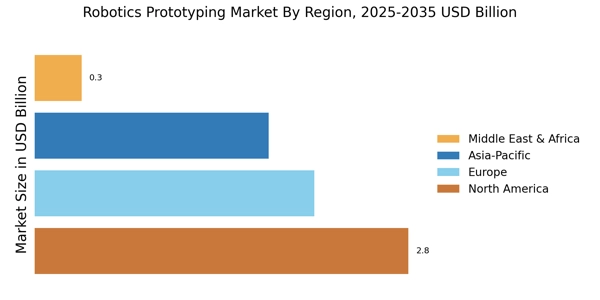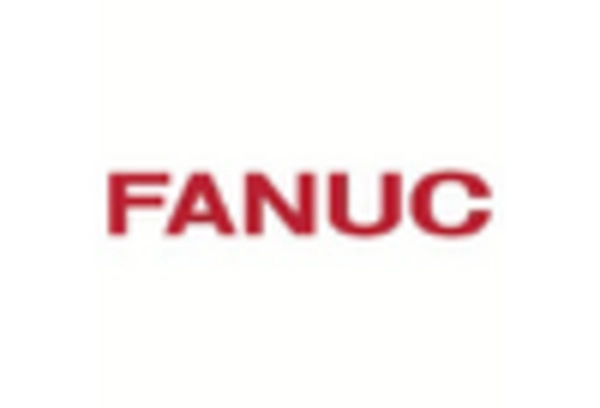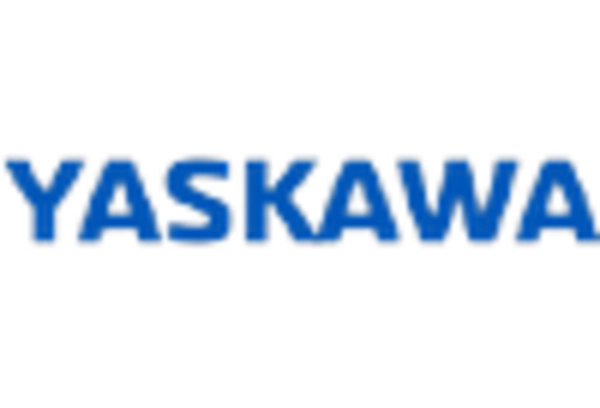Rising Demand for Automation
The Robotics Prototyping Market is experiencing a notable surge in demand for automation across various sectors. Industries such as manufacturing, healthcare, and logistics are increasingly adopting robotic solutions to enhance efficiency and reduce operational costs. According to recent data, the automation market is projected to grow at a compound annual growth rate of over 10% in the coming years. This trend is likely to drive the Robotics Prototyping Market as companies seek to develop and prototype innovative robotic systems that can streamline processes and improve productivity. As organizations recognize the potential of robotics to transform their operations, investment in prototyping technologies is expected to rise, further fueling market growth.
Advancements in Robotics Technologies
Technological advancements play a pivotal role in shaping the Robotics Prototyping Market. Innovations in artificial intelligence, machine learning, and sensor technologies are enabling the development of more sophisticated robotic systems. These advancements allow for enhanced capabilities, such as improved navigation, object recognition, and decision-making processes. As a result, companies are increasingly investing in prototyping to create cutting-edge robotic solutions that meet evolving market demands. The integration of advanced technologies is anticipated to propel the Robotics Prototyping Market, as businesses strive to stay competitive by leveraging the latest innovations in robotics.
Increased Collaboration Between Industries
Collaboration between different industries is emerging as a significant driver for the Robotics Prototyping Market. Partnerships between technology firms, research institutions, and manufacturing companies are fostering the exchange of knowledge and resources. Such collaborations enable the rapid prototyping of innovative robotic solutions that can address specific industry challenges. The synergy created through these partnerships is likely to accelerate the development of new prototypes, thereby enhancing the Robotics Prototyping Market. As industries recognize the benefits of working together, the potential for groundbreaking advancements in robotics increases.
Regulatory Support for Robotics Development
Regulatory support is becoming increasingly important for the Robotics Prototyping Market. Governments are recognizing the potential of robotics to drive economic growth and are implementing policies that encourage innovation and development in this field. Supportive regulations can facilitate funding opportunities and provide a framework for safe and effective robotic applications. As regulatory bodies establish guidelines that promote the responsible use of robotics, the Robotics Prototyping Market is likely to benefit from increased investment and development activities. This supportive environment may lead to a more robust and dynamic market for robotic prototypes.
Growing Investment in Research and Development
Investment in research and development is a critical driver for the Robotics Prototyping Market. Companies are allocating substantial resources to explore new applications and improve existing robotic technologies. This focus on R&D is essential for fostering innovation and ensuring that prototypes meet the specific needs of various industries. Data indicates that R&D spending in the robotics sector has increased significantly, with many firms recognizing the importance of developing prototypes that can adapt to changing market conditions. This trend is likely to enhance the Robotics Prototyping Market, as organizations seek to create more effective and versatile robotic solutions.

















Leave a Comment